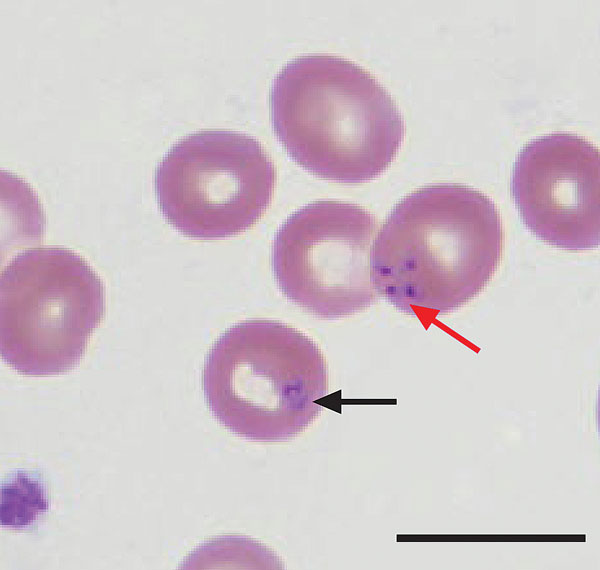Volume 22, Number 11—November 2016
CME ACTIVITY - Synopsis
Transmission of Babesia microti Parasites by Solid Organ Transplantation
Figure 2

Figure 2. Wright-stained peripheral blood smear from patient A (index case-patient), a renal transplant recipient infected with Babesia microti parasites, Wisconsin, USA, 2008. The smear shows intraerythrocytic Babesia parasites, a ring form (black arrow), and a Maltese cross or tetrad form (red arrow), which is pathognomonic for babesiosis. Scale bar indicates 10 μm.
Page created: October 12, 2016
Page updated: October 17, 2016
Page reviewed: October 17, 2016
The conclusions, findings, and opinions expressed by authors contributing to this journal do not necessarily reflect the official position of the U.S. Department of Health and Human Services, the Public Health Service, the Centers for Disease Control and Prevention, or the authors' affiliated institutions. Use of trade names is for identification only and does not imply endorsement by any of the groups named above.